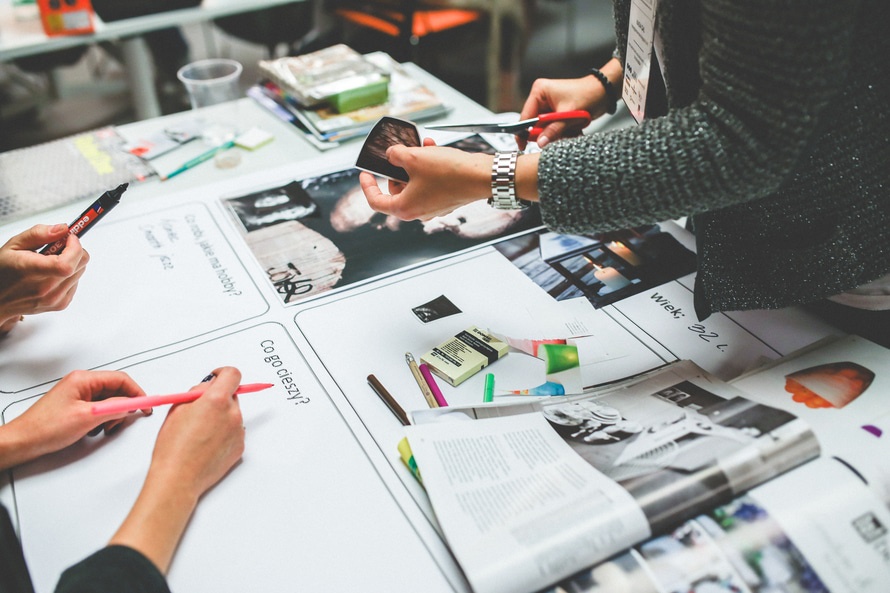A mood board, or mind map, is a creative method that is used to brainstorm ideas and concepts. It can be a compilation of images, colors, fonts and layouts in some organized fashion to help direct the overall look of a project you’re working on. Even though every project won’t require a mood board, certain ones, such as marketing campaigns and web design, do benefit from the process of mood board and mind maps. Mood boards and mind maps can also be used to create ideas for weddings, decorating and so much more.
There are many benefits to creating them. The process of mood boards and mind maps expand psychological thinking capacity and expands your horizons in any given situation. Take a look at some of the long-term benefits of consistent mind mappers:
- Ability to see things on larger scale.
- Ability to see detailed information.
- Ability to remember difficult information.
- Ability to keep record of information.
- Ability to organize mental clutter.
- Ability to manage periods of information overload.
- Enhanced imagination and memory.
- Enhanced concentration.
- Better note-taking.
- Enhanced ability to solve problems.
- Enhanced capacity to manage heavy workload.
- Saves time.
- Lays out goals.
- Organizes plans of action.
- Expresses ideas.
So now that you know what the benefits of mood boards and mind maps are, it’s time to put it to action and make one of your own. So, how do you do that? There’s nothing hard or complicated about creating a mood board and mind map. Continue reading to find out just how to start and go through the process of creating your mood board and/or mind map.
What To Make It With
So what exactly does a mood board look like? When you want to make a mood board, you can start by using any size poster or bulletin board. If you’re looking to do something on an electronic platform, a PDF or PowerPoint works fine as well. When you’re ready to start putting it together, you’ll need swatches, pictures from magazines, stock photos, videos, fonts, paper samples, and pretty much anything that you can draw inspiration from. Think of a mood board as a giant brainstorm collage that you can be as creative as you’d like with. You’re supposed to have fun with this, regardless of what you’re trying to accomplish and why you’re putting one together. Nothing is off limits!
Starting to Design
Once you’d gathered all of your materials, it’s time to start putting it together. Be sure you know exactly what the goal is so you’re brainstorming towards the right thing. The best thing about the mood board is that you can keep your colleagues or clients on board with how the project is coming along during the process of creating to mood board. This will allow them to make sure the project is moving in the right direction. Be sure to take your time while sketching and placing your fonts and photos on the board. You want the finished product to be exactly what you and your client want, so don’t rush the creative process – and have fun!

